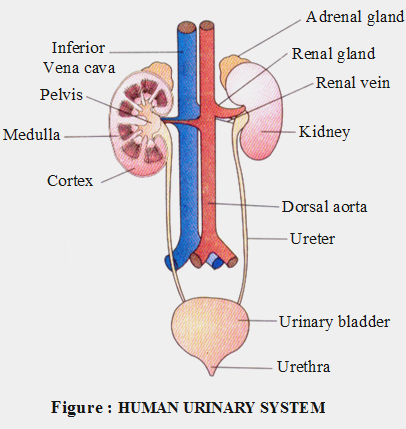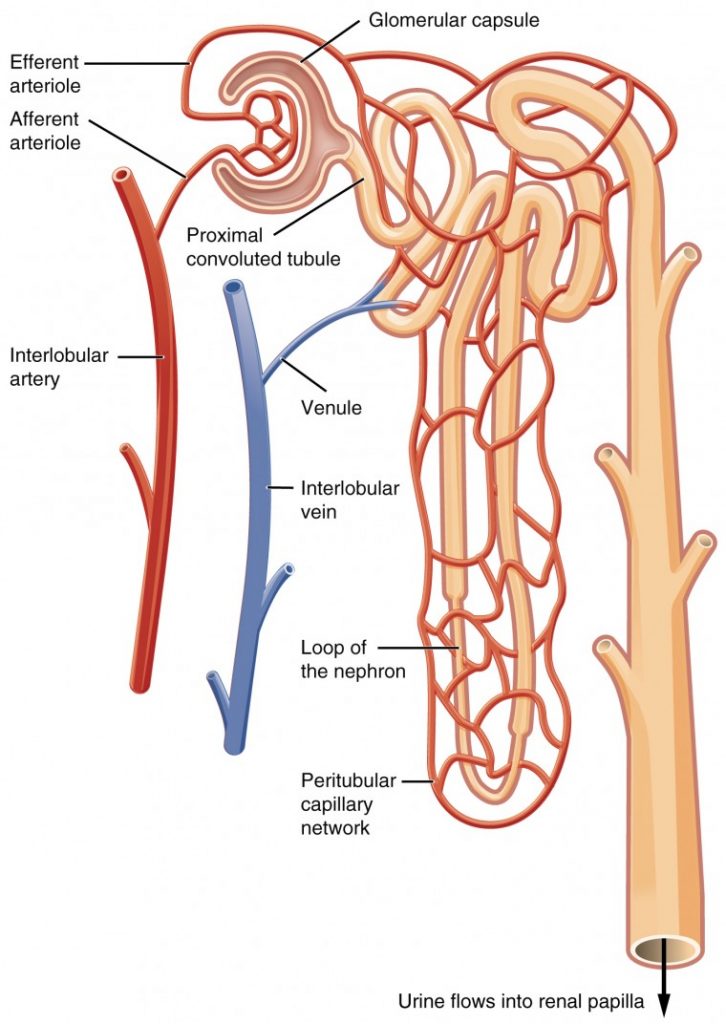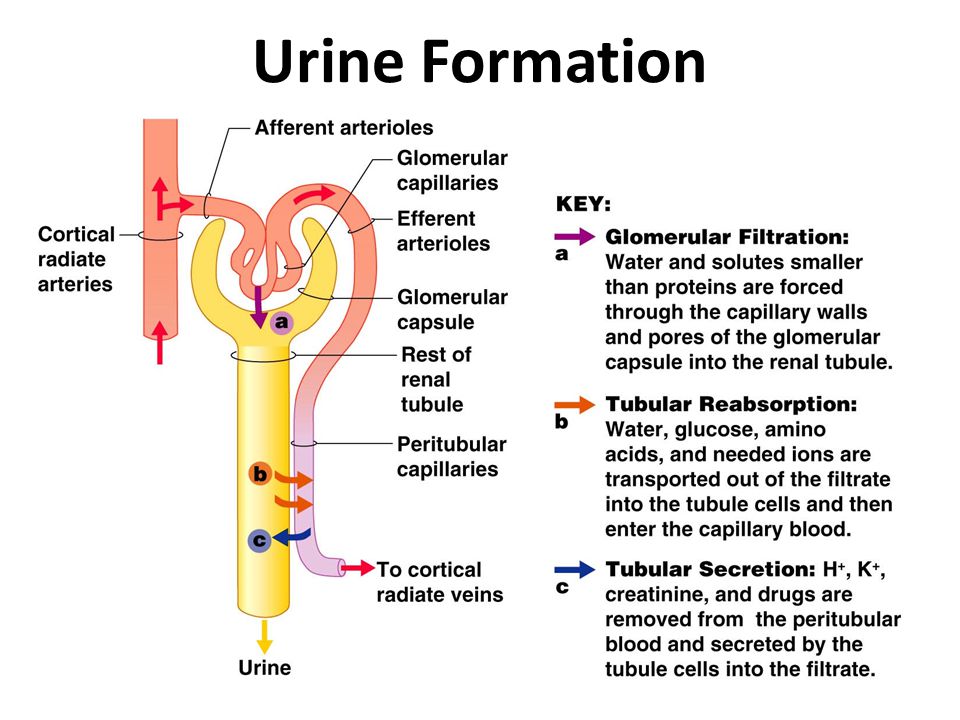Excretion
Excretion is a biological process by which an Organism removes Harmful Metabloic Wastes fron the Body.
Getting rid of waste is just as important as bringing in nutrients. Without a way to get rid of waste, a cell would soon poison itself and die.Specialized cells work together in the excretory system to remove waste from the body or to store waste until it can be removed.
Also Check – Excretory Syestem – Notes
Excretion in Human Beings
The Human Excretory System is one of the most important organ systems of the body that performs the vital function of filtering your blood and removing excessive and unnecessary materials from the body.
It helps to maintain an internal chemical homeostasis and prevent damage to the body
Human Excretory System is a wide term which involves several other organs other than the urinary system organs like skin, lungs, gut nails and hair.
When cells use the nutrients that are delivered by the circulatory system, they produce waste materials that diffuse back into the bloodstream. It is necessary to remove these waste materials as soon as possible.
Proteins in your diet that are not needed for growth and repair are broken down in the liver. This provides some energy for the body, but it also produces a very toxic substance called ammonia. The liver changes the ammonia into a less toxic waste called urea. The urea is then dissolved in the bloodstream and carried to the kidneys.
All the blood from around the body must therefore pass through the kidneys every minute.
Excretory Waste of Human beings
There are a number of chemical substances which are regularly formed in the human body or which are absorbed through the food that must be eliminated otherwise they become harmful.
Following are the Substances to be Eliminated from Human Body
Carbon dioxide and Water:
- Every living cell liberates energy by oxidizing glucose with the production of carbon dioxide and water.
- Carbon dioxide is eliminated through the lungs.
- The extra water is released out of the body in the form of sweat.
Nitrogenous Wastes:
- These include urea, uric acid and ammonia.
- These are produced mainly in the liver from the dead protein-remains of the other tissues that are brought to it.
- Any extra amino acids (digestion products of protein) cannot be stored in the body.
- They are broken down in the liver to produce usable (also storable) glucose and the urea that has to be excreted out.
- Urea is highly poisonous; if allowed to accumulate in the blood to a certain level, it causes death.
- Urea is excreted through the kidneys.
Excess Salts And Vitamins
- Excess salts such as common salt (NaCl) and even some excess water-soluble vitamins (B and C) need to be eliminated.
- Salts are mainly given out through the kidneys.
Water
- Water is taken in with food and beverages, in large quantities.
- The excess quantity of water is removed which, incidentally, also serves a useful purpose of dissolving the harmful materials to carry them out.
Bile pigments
- Bile Pigments are the breakdown products of the hemoglobin of the dead RBCs.
- The liver cells extract it from the circulation and secrete it into the bile juice poured into the duodenum through the common bile duct.
- These pigments are modified in the intestine to pigments that give feces their yellowish brown color. Some of these pigments are excreted in urine.
Also Check – What is Osmoregulation and Significance of Excretion and Osmoregulation
Excretory Organs In Human Beings
Excretion in human beings is carried out by the following organs :
Kidneys
- These are the primary excretory organs, eliminating nitrogenous wastes from the blood and throwing it out in the form of urine.
Also Check – What is Artificial Kidney
In addition to kidneys and the associated urinary system, the following accessory excretory organs also help in removing waste substances from our body:-
Skin
- Sweat excreted by the sweat glands of the skin primarily excrete water and sodium chloride, along with small amounts of urea and lactic acid.
- Sweat glands pass out sweat only when required for cooling, so truly they are not excretory.
Lungs
- They excrete carbon dioxide from our body through the expired air.
Also Check – Compare the Functioning of Alveoli in the Lungs and Nephrons in the Kidneys with respect to their Structure and Functioning.
Liver
- Liver detoxifies ammonia by converting it to urea.
- Urea is excreted through urine.
- Liver also breaks down bad cholesterol, alcohol, nicotine and drugs.
Also Check – Structure Of Kidney
The Excretory System in Human Beings – The Urinary System
The excretory system of human beings include following Organs

- A Pair Kidneys
- A Pair of Ureters
- A Urinary Bladder
- Urethra
Also Check – Function Of Kidney
Kidneys are bean shaped organs that are present on each side of spine almost at the level of umbilicus.
Each kidney is made up of millions of tiny tubules, called Nephrons. Each nephron is connected to the bloodstream by a small capsule of very tiny blood vessels. Blood pressure in these blood vessels is very high, so the waste is pushed across a thin membrane into a tubule.
Also Check – Structure of Nephron
In each tubule, the waste is dissolved in a small amount of water, which is then collected in the ureter. The ureter carries the waste to the bladder, where it is stored as urine.
Also Check -Functioning of Nephron
Blood Supply to The Nephrons

- A pair of Renal Arteries branch off from the dorsal aorta to enter the respective kidneys.
- Each renal artery branches and rebranches several times to give rise to arterioles; each such arteriole enters a Bowman’s capsule under the name of afferent arteriole .
- This afferent arteriole breaks into a number of capillaries which form a knot-like mass (glomerulus) closely fitting inside the Bowman’s capsule .
- The reuniting capillaries of the glomerulus from the efferent arteriole.
- The efferent arteriole after emerging from the Bowman’s capsule runs a short distance and breaks up into a secondary capillary network which surrounds the renal tubule, and rejoins to form a vein .
- By uniting again and again with other veins of the kidney, it ultimately forms the renal vein which leaves the kidney at the median surface to pour the blood into the posterior vena cava.
Also Check – Mechanism of Urine Formation
Process of Urine Formation

Formation and Removal of Urine takes place by the following processes
- Ultrafiltration occurs in glomerulus under high pressure forcing many of the substances dissolved in blood into Bowman’s capsule.
- The blood then passes through the tubular part of the nephron where useful substances such as glucose, amino acids, salts and major amounts of water are selectively reabsorbed.
- Some nitrogenous waste products like creatinine and K are removed from the blood by the tubule and are then added to the urine (tubular secretion).
- The urine formed in each kidney enters a long tube called the ureter, which connects the kidneys with the urinary bladder.
- Urine is stored in the urinary bladder until the pressure of the expanded bladder causes the urge to pass it out through the urethra.
The amount of water that is reabsorbed in the body depends on how much excess water is present in the body and the amount of dissolved waste to be excreted.


7 Comments on “Excretion in Human Beings Class 10”